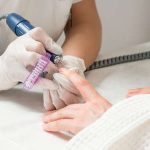1. Understanding the Difference Between At-Home and In-Office Care
After receiving a cosmetic treatment—whether its Botox, dermal fillers, laser therapy, or microneedling—its important to know what kind of care you’ll need during the recovery period. The post-treatment experience can vary depending on whether youre managing your recovery at home or attending scheduled follow-up visits at your provider’s office.
What Does Post-Treatment Care Typically Involve?
Post-treatment care refers to the steps you take after a cosmetic procedure to help your skin heal properly and achieve the best results. This may include applying specific skincare products, avoiding certain activities, or attending additional appointments for monitoring and adjustments.
At-Home Care vs. In-Office Visits: What’s the Difference?
The table below outlines some common differences between caring for your skin at home versus visiting your provider for post-treatment support:
| Aspect | At-Home Care | In-Office Visits |
|---|---|---|
| Monitoring Progress | You monitor changes in swelling, redness, or discomfort yourself. | Your provider checks healing progress and identifies any concerns early. |
| Treatment Adjustments | No immediate adjustments unless instructed remotely by your provider. | Treatments can be adjusted or fine-tuned in real-time if necessary. |
| Pain Management | You use over-the-counter remedies as directed. | Your provider may offer professional treatments like cooling therapy or prescription options. |
| Skincare Guidance | You follow a written care plan with recommended products. | You receive hands-on demonstrations and personalized product recommendations. |
| Time Commitment | No travel time; recovery happens on your schedule. | You need to set aside time for appointments and commuting. |
Why It Matters
Knowing the difference between at-home care and in-office visits helps set realistic expectations. While many treatments are safe to recover from at home with proper instructions, some require professional follow-up for best results and safety. Your provider will guide you on what level of care is needed based on your treatment type and personal skin goals.
2. Immediate Aftercare: What Happens Right After Your Treatment
Right after your aesthetic treatment, whether its Botox, dermal fillers, laser therapy, or a chemical peel, the first few hours are crucial for proper healing and optimal results. Heres what you can expect and how to care for yourself immediately after your visit.
Follow Your Provider’s Instructions
Your provider will give you personalized aftercare instructions based on your specific treatment. These may include what products to avoid, how to clean the treated area, and when to schedule your follow-up visit. Be sure to follow these directions closely—it makes a big difference in how well you recover and how long your results last.
Managing Discomfort
Mild discomfort is common after many cosmetic procedures. Most patients describe it as a tight or warm sensation rather than pain. Here are some easy ways to manage it:
- Use over-the-counter pain relievers like acetaminophen (Tylenol) if needed (avoid aspirin or ibuprofen unless approved by your provider).
- Avoid touching or massaging the treated area unless instructed otherwise.
- Rest and take it easy for the rest of the day.
Reducing Swelling and Redness
Swelling and redness are normal reactions, especially with injectable treatments or lasers. Here are simple ways to help minimize them:
| Method | Details |
|---|---|
| Cold Compress | Apply a clean, cold compress gently over the area for 10–15 minutes at a time. |
| Keep Head Elevated | If swelling occurs on the face, sleep with an extra pillow to reduce fluid retention. |
| Avoid Heat | Skip hot showers, saunas, or intense exercise for at least 24–48 hours post-treatment. |
What Not to Do Immediately After Treatment
Certain habits can interfere with recovery. Here’s what you should avoid right after your procedure:
- No makeup for at least 12–24 hours (or as advised).
- No alcohol consumption for at least 24 hours—it can increase bruising.
- No heavy lifting or strenuous workouts until cleared by your provider.
Quick Tip:
If youre unsure about anything—like when its safe to resume your skincare routine—dont hesitate to contact your providers office. Its better to ask than guess!
At-Home vs. In-Office Monitoring
The first phase of recovery happens at home, but depending on the procedure, some providers recommend quick in-office check-ins within a few days. These visits help ensure everything is healing properly and allow minor adjustments if needed. If youre recovering at home without an immediate follow-up, keep track of any unexpected changes like severe swelling, prolonged redness, or signs of infection—and call your clinic if something doesn’t feel right.
Taking these immediate steps seriously helps lay the foundation for smoother healing and better outcomes from your aesthetic treatment.
![]()
3. At-Home Recovery: Tips for Optimal Healing
After your cosmetic treatment, following proper at-home care is key to getting the best results and avoiding complications. While some treatments may require in-office follow-ups, most recovery happens right at home. Here are essential tips to help you heal safely and effectively.
Essential Do’s for At-Home Care
- Follow your providers instructions: Always stick to the aftercare plan given by your doctor or aesthetician.
- Keep the treated area clean: Gently cleanse with a mild, non-irritating cleanser as recommended.
- Use approved skincare products: Only apply creams, serums, or ointments that were recommended by your provider.
- Stay hydrated and eat well: Proper nutrition supports healing from the inside out.
- Protect your skin from the sun: Use SPF 30+ sunscreen and avoid direct sunlight when possible.
Important Don’ts During Recovery
- Don’t pick or scratch: Let any scabs or peeling skin fall off naturally to avoid scarring.
- Avoid heavy workouts: Strenuous activity can increase swelling or disrupt healing for at least 24–72 hours depending on the treatment.
- No harsh skincare products: Avoid retinoids, exfoliants, or alcohol-based toners unless cleared by your provider.
- Skip hot environments: Saunas, hot tubs, and steam rooms can irritate sensitive skin post-treatment.
Skincare Routine Overview
| Time of Day | Steps |
|---|---|
| Morning | Mild Cleanser → Hydrating Serum → Moisturizer → Sunscreen (SPF 30+) |
| Evening | Mild Cleanser → Healing Ointment or Provider-Approved Cream → Moisturizer |
When to Contact Your Provider
If you notice anything unusual during your recovery, its important to reach out to your provider. Here are some signs you shouldn’t ignore:
- Excessive redness, swelling, or warmth around the treated area
- Pain that increases instead of decreases over time
- Pus or unusual discharge
- A fever above 100.4°F (38°C)
- An allergic reaction such as hives or difficulty breathing
Your recovery is an important part of your overall treatment experience. By taking care of yourself at home and staying aware of what’s normal—and what’s not—you’ll help ensure great results and a smoother healing process.
4. The Role of Follow-Up Visits in Monitoring Your Progress
After receiving a cosmetic treatment, it’s natural to wonder whether all the follow-up appointments are truly necessary—especially when you’re already seeing great results at home. However, in-office visits play a key role in ensuring that your recovery stays on track and that your final outcome meets your expectations.
Why In-Office Check-Ups Are Important
Even if youre feeling fine and everything looks good, professional eyes can catch subtle signs of complications or areas that might need touch-ups. These appointments help your provider:
- Monitor how well youre healing
- Check for any side effects or complications
- Adjust your care plan if needed
- Track the progress of results over time
What Happens During These Visits?
A follow-up visit is usually quick and straightforward. Here’s what typically happens:
| Step | What It Involves |
|---|---|
| Visual Inspection | Your provider will examine the treated area to check for signs of infection, swelling, bruising, or uneven healing. |
| Progress Photos | Photos may be taken to compare with your before-treatment pictures. |
| Q&A Time | You can ask questions or share concerns about pain, appearance, or aftercare routines. |
| Treatment Adjustments | If needed, minor corrections or adjustments can be made during this visit. |
| Next Steps Planning | Your provider may schedule future visits or suggest additional treatments based on progress. |
How Follow-Up Visits Help Ensure Long-Term Results
Healing doesn’t stop once you leave the office—it continues for weeks or even months. Regular check-ins allow your provider to guide you through each phase of recovery. They can recommend personalized skincare products, lifestyle changes, or maintenance treatments to keep your results looking fresh and natural.
At-Home vs. In-Office: A Quick Comparison
| Care Type | What You Can Do at Home | What Only Your Provider Can Do In-Office |
|---|---|---|
| Cleansing & Moisturizing | Follow daily routine with recommended products | Evaluate skin response and recommend adjustments if needed |
| Pain Management | Take prescribed medication as directed | Assess severity and provide medical intervention if necessary |
| Progress Tracking | Self-monitor swelling, redness, and changes | Use clinical tools and photos to track subtle improvements or issues |
| Treatment Adjustments | N/A – cannot self-correct outcomes at home | Perform touch-ups or additional treatments if needed |
Your journey doesn’t end when you walk out of the clinic—it evolves with time and expert support. Making time for those in-office follow-ups is one of the best ways to protect your investment and enjoy beautiful, lasting results.
5. When to Seek Professional Help: Warning Signs to Watch For
After any cosmetic treatment—whether done in-office or followed by at-home care—knowing what’s normal and what’s not is key to a smooth recovery. While mild redness, swelling, or sensitivity are common side effects, there are certain signs you should never ignore. Recognizing these warning signs early can help prevent more serious complications.
Common vs. Concerning Symptoms
Here’s a simple breakdown of what you might expect after treatment and when it’s time to call your provider:
| Symptom | Normal | Seek Help If… |
|---|---|---|
| Redness | Mild and fades within 24–48 hours | Severe, spreading, or lasts more than 3 days |
| Swelling | Localized and improves over time | Worsening or accompanied by pain or heat |
| Pain or Discomfort | Mild soreness or tenderness | Sharp, increasing pain or throbbing sensation |
| Bruising | Light bruising that fades gradually | Dark, expanding bruises or unexplained bleeding |
| Sensation Changes (tingling/numbness) | Temporary and resolves within hours/days | Persistent numbness or loss of function in the area |
| Fever/Chills | N/A | Temperature above 100.4°F (38°C) or chills present—may indicate infection |
| Discharge from Treatment Area | Clear fluid may be normal in some procedures | Pus-like discharge, foul odor, or excessive oozing—possible infection sign |
| Skin Changes (color/texture) | Slight flaking or dryness during healing phase | Dark patches, blistering, peeling skin, or scabbing outside expected healing range |
Trust Your Instincts and Contact Your Provider If:
- You feel something just isn’t right—even if symptoms seem minor.
- Your symptoms worsen instead of improve after 48–72 hours.
- You experience any allergic reaction like hives, itching, difficulty breathing, or facial swelling.
Your Post-Treatment Support Matters
Your aesthetic provider is your best resource for guidance if you’re unsure whether your symptoms are normal. Whether you had a chemical peel, injectable filler, laser treatment, or another procedure, staying informed about post-treatment warning signs helps keep your results safe and satisfying.
Pro Tip:
If youre receiving at-home treatments under medical supervision (such as prescription skincare), make sure to have clear instructions on what side effects are expected versus those that require follow-up.
When in doubt, reach out—it’s always better to ask than risk a complication going untreated.


